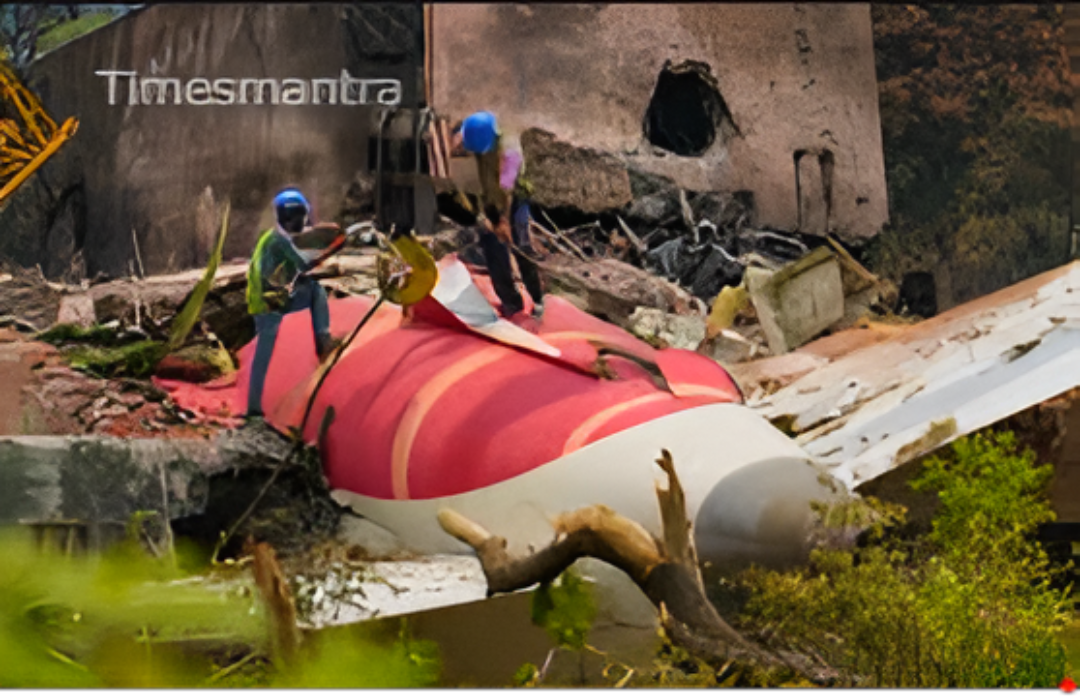Air India Crash Report Blames Fuel Switch Shutdown
Air India Crash Blamed on Mid-Air Engine Fuel Cutoff. Pilots Deny Flipping Switches. 260 Lost Lives in Tragic Ahmedabad Disaster.
The nation is once again gripped by profound sorrow and urgent questions following the release of the preliminary report by India’s Aircraft Accident Investigation Bureau (AAIB) regarding the tragic Air India Crash of Flight AI171 on June 12, 2025, in Ahmedabad. The report pinpoints a catastrophic and sudden cutoff of fuel to both engines moments after takeoff as the primary cause of the disaster, which claimed the lives of 260 people, including nearly all on board the Boeing 787-8 Dreamliner and several individuals on the ground. This alarming finding, detailed in the AAIB Report, has sent shockwaves through the global Aviation News community, raising serious concerns about Flight Safety protocols and the intricate mechanics of modern aircraft.
The ill-fated Air India Flight AI171, a Boeing 787-8 Dreamliner (registration VT-ANB) bound for London Gatwick, took off from Ahmedabad’s Sardar Vallabhbhai Patel International Airport on June 12. What began as a routine departure quickly turned into an unimaginable nightmare. According to the preliminary findings, the aircraft achieved its maximum recorded airspeed of 180 knots approximately three seconds after lift-off. In those critical moments, the Engine 1 and Engine 2 fuel cutoff switches inexplicably transitioned from the “RUN” to the “CUTOFF” position, one after another, with a mere one-second interval between them. This immediate and unexpected cessation of fuel supply led to a rapid and devastating loss of thrust from both engines, plunging the aircraft into an irreversible descent.
The harrowing events that unfolded in the cockpit are beginning to surface through the analysis of the Cockpit Voice Recorder (CVR) data. In a chilling exchange, one pilot is heard asking the other, “Why did you cut off the fuel?” To this desperate query, the other pilot reportedly responded, “I did not do so.” This exchange, captured just seconds before impact, underscores a profound state of confusion and suggests that the pilots were unaware of, or did not intentionally initiate, the crucial switch movements that sealed the fate of the flight. The report indicates that while the switches were observed to be flipped back to the “RUN” position about 14 seconds later, triggering the aircraft’s automatic engine relight sequence, it was tragically too late. The Dreamliner had already lost critical altitude and velocity, crashing into residential quarters near the airport just 32 seconds after becoming airborne. The lone survivor, a British national, bore witness to this horrific 2025 India Plane Crash.
Aviation safety experts are scrutinizing the findings, particularly the notion of inadvertent activation of the fuel control switches. These switches, designed to be resistant to accidental movement—requiring a deliberate pull before being shifted—are typically used only during engine start-up, shutdown on the ground, or in specific emergency situations such as an engine fire. The AAIB Report states there was no indication of any such emergency that would necessitate an engine Fuel Cutoff at that critical phase of flight. This has led many experts to question how such a grave error could have occurred or if an underlying mechanical anomaly, despite initial assessments showing no mechanical fault with the aircraft or engines, played a role.
The incident marks a grim milestone as the first fatal accident involving a Boeing 787 Dreamliner resulting in a hull loss, and it stands as one of India’s deadliest aviation disasters in over a decade. In the immediate aftermath, a multi-disciplinary investigation team was formed, and both the Cockpit Voice Recorder (CVR) and Flight Data Recorder (FDR) – the crucial “black boxes” – were recovered from the crash site. Their data has been extracted and forms the bedrock of the preliminary findings. The wreckage itself was meticulously documented using drones and subsequently moved to a secure area for further analysis, with both engines quarantined for detailed examination. Fuel samples from the aircraft and ground refuelling equipment were tested and found to be satisfactory, ruling out fuel contamination as a factor.
In response to the tragedy and the preliminary report, Air India has issued a statement reaffirming its full cooperation with the AAIB’s ongoing investigation. The airline has also stated its commitment to supporting the families of the victims during this profoundly difficult time. Furthermore, the Directorate General of Civil Aviation (DGCA) has ordered enhanced safety inspections across Air India’s Boeing 787 Dreamliner fleet, and the airline itself initiated a “Safety Pause” involving a temporary scale-back of international and domestic services to allow for additional aircraft checks and schedule stabilization. This highlights the industry’s immediate response to bolster Flight Safety in the wake of such an unprecedented incident.
While the preliminary report offers critical insights into the immediate moments before the crash, it refrains from apportioning blame at this early stage. The investigation is still ongoing, with the AAIB Report noting that further evidence and information are being sought from stakeholders, including Boeing and engine manufacturers. The focus remains on understanding the precise sequence of events that led to the fuel cutoff—whether due to human factors, a system malfunction, or a combination thereof. The detailed analysis of cockpit audio, flight data, and component examinations will continue for months, with a final report expected to provide definitive conclusions and recommendations to prevent any recurrence of such a catastrophic event.
The tragic Air India Crash in Ahmedabad serves as a stark reminder of the immense complexities and inherent risks in aviation, even with advanced aircraft like the Dreamliner. It underscores the continuous need for rigorous Flight Safety protocols, thorough crew training, and resilient system designs. The loss of 260 lives is a profound tragedy that demands a comprehensive and transparent investigation, ensuring that every possible lesson is learned from this devastating 2025 India Plane Crash to enhance global aviation safety for the future.
- Air India Ahmedabad-London Flight Cancelled Due to Aircraft Issue
- 🚨 Ahmedabad Plane Crash: Air India Tragedy Shocks Gujarat
Air India Ahmedabad-London Flight Cancelled Due to Aircraft Issue
